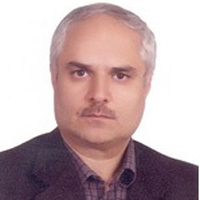Investigation of Intera- and Interspecies Variation of Festuca Using Seed Protein Electrophoresis
Festuca is one of the largest genera of the grass family, which has more than 600 species with different ploidy levels. The aim of this study was to estimate the genetic diversity within 22 populations of three species of Festuca (Festuca arundinacea, F.rubra and F.ovina) using a seed storage protein electrophoresis pattern. These species showed a significant variation in the number of protein bands from 5-13. The highest number of bands was found in G17 (F.rubra) and the lowest number of protein bands was in G5 (F.ovina). Band number 14 was only observed in G3. It is suggested that this band can be considered as a specific band for the identification of this genotype. According to the results of AMOVA analysis, there is a high level of genetic diversity within the species rather than between species that can be due to the out-crossing nature of this genus. According to observed differences for variation parameters among the three studied species, it is concluded that they have dissimilar genetic structures. The results of cluster analysis based on seed storage protein profiles in evaluated genotypes using Euclidean distance matrix and UPGMA method showed four groups. The lowest similarity coefficient was between G14 and G15 (F.arundinacea) with G6 (F.ovina). Hence, it is suggested that they evolved from a different evolutionary process and it is suggested to use them as the parents of new synthetic varieties. The observed diversity in the seed protein pattern in the three species of Festuca, can be explained by allogamy-induced-heterozygosity, species difference or population collection from various regions.
-
Comparison of physicochemical properties of peppermint (Mentha piperita L.) distillate obtained from dry and fresh plant in vegetative and flowering stages and in different distillate to water ratios
Reyhaneh Taebnia, Fatemeh Sefidkon *, Ali Mohammadi Torkashvand, , Sepideh Kalate Jari
Iranian Journal of Horticaltural Sciences,


